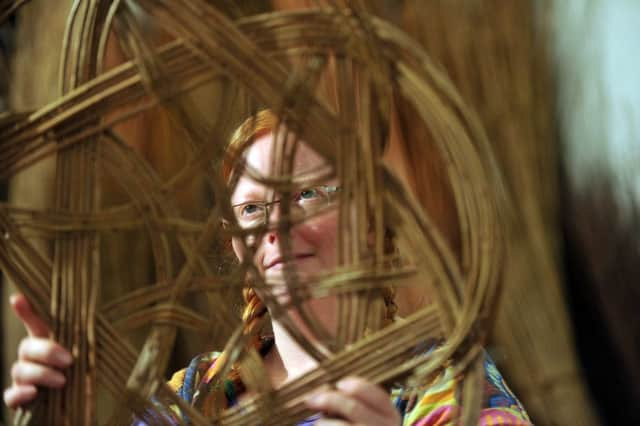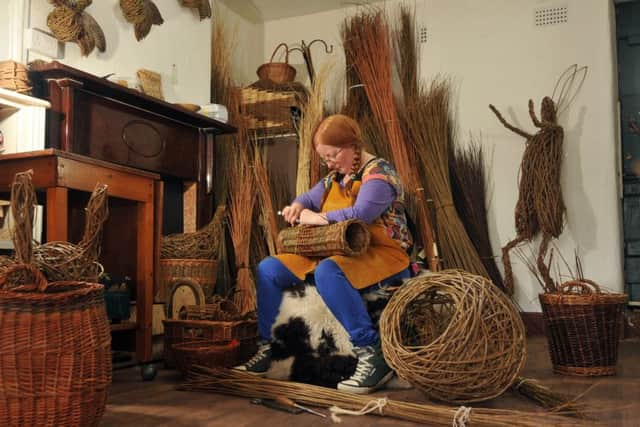All about weave


Joevanka first discovered willow after a life-changing illness. Pregnant with her second child, she started suffering from constant sickness, debilitating lethargy and sight problems. Doctors put it down to hormones and told her she would be fine after the birth. She wasn’t. “Every day was a struggle. I was in bed by 5pm, I couldn’t bear light or noise and my field of vision had narrowed,” she says.
She visited an optician and he immediately sent her to an eye specialist who recognised the symptoms of a tumour and called for an ambulance.
Advertisement
Hide AdAdvertisement
Hide Ad“It was a pituitary tumour and if had been left undiagnosed any longer it would’ve killed me,” says Joevanka, who had the operation to remove it 10 years ago.


She is recovered now, though the fight back to health was long and began with a determination to do a job that made her happy.
Joevanka had previously worked in sales and hated it, so she decided to build a career based on her interest in environmental issues and the permaculture club she ran at her daughter’s school.
“When I felt well enough, I began doing more permaculture workshops and then I became a forest school leader, teaching children about woodlands, making fire with sticks and building dens. It was during that time that I first encountered willow,” she says.
Advertisement
Hide AdAdvertisement
Hide AdShe began making simple obelisks and pea climbers before going on a willow weaving workshop.


“I made a dragonfly sculpture and that was it, I was hooked. It’s completely engrossing. You can lose two to three hours and during that time you don’t think about anything that’s worrying you. It’s so therapeutic,” says Joevanka.
Willow has been woven for centuries. The Vikings and the Romans were big fans and used it for everything from making walkways over boggy tracks to weaving cribs for their babies. The oldest willow find was a fishing basket that archaeologists unearthed in Denmark, which was carbon dated to 5,000 years ago.
Along with the practical, it is now used to make decorative items. Joevanka’s shop and studio, Creative with Nature, features everything from sculptures to willow hearts and wall-hung butterflies.
Advertisement
Hide AdAdvertisement
Hide AdThe walls are filled with paintings by local artists and there’s plenty of space for her regular workshops.
While she is a natural at making sculptures, she found basketry far more difficult. “It is very mathematical, very calming and very zen but it is hard. I decided to teach myself as a challenge and it’s the thing I’m most proud of. I taught myself from a book by Mary Butcher, president of the Basketmakers Association, and I am now completely obsessed but it.”
Joevanka’s baskets are a work of art, as are the herring crans, traditional Scottish fishing baskets, made by Fiona McDougal, which she also stocks. Crans makers serve a five-year apprenticeship.
“The problem is that people can buy imported baskets from the Far East for much less than ours but I try to remind them that someone else is paying the price in slave wages and that there is probably an environmental cost,” says Joevanka.
Advertisement
Hide AdAdvertisement
Hide AdThe environment has impacted on her ability to do living willow sculptures that sprout green in the spring.
“You plant them when it is frosty and as soon as the soil warms the roots spread out really well. If you plant when the soil is warm and wet, they just rot. The window of opportunity for doing living sculptures is now much shorter than it used to be thanks to climate change.”
Much of her willow is from commercial growers in Somerset, where the ground is wet enough for this thirsty plant. Most of it is the standard Black Maul. Much more exciting is a new source from just up the road in Walden, where a couple with a smallholding have begun growing different varieties especially for Joevanka.
“It’s amazing and I feel so lucky. They aren’t available from commercial growers because they are not viable. It means that I have willow with different colours and textures,” she says, pointing to a contemporary bowl made from Continental Purple, a silver grey with hints of purple that looks bang on trend.
Advertisement
Hide AdAdvertisement
Hide Ad“It’s a nightmare to weave, which is why the commercial farmers don’t grow it.”
Before it is used, willow must be sorted into different thicknesses. It is then soaked so it can be bent and twisted into shapes. It’s so pliable and strong it can even be tied in a knot.
Joevanka’s latest willow product is a backpack with leather straps. “It is very ergonomic. It rests on the muscles, not the spine and there’s a foot border to stop it wearing out,” she adds.
At £180 it is an investment buy, but then there is a very good chance that it will last for centuries and possibly even millennia.
Creative with Nature, 17 Burnley Road, Todmorden, tel 07588 944166, creativewithnature.co.uk